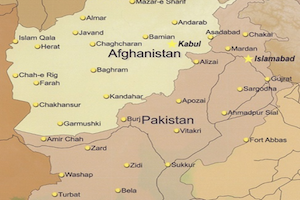Afghanistan and Pakistan Clash Over Border Fence
By Sudha Ramachandran
December 19, 2018, the CACI Analyst
On October 15, Afghan and Pakistani security forces exchanged fire. Such incidents, which have claimed the lives of hundreds of border security personnel and others on both sides, have grown in frequency in recent years. The clashes are over Pakistan’s unilateral construction of a fence along the Durand Line. Pakistan says the fence will check armed militants moving between the two countries. Afghanistan, which has not accepted the Durand Line as its border with Pakistan, disagrees. The controversial fence is adding tension to an already fraught bilateral relationship.

Regional Cooperation in Central Asia: Relevance of World Models
By Svante E. Cornell and S. Frederick Starr
December 4, 2018, the CACI Analyst
Central Asian states are embarking on a new effort to build regional cooperation. In March 2019, the second yearly summit of Central Asian leaders will be held in Tashkent. Discussions are under way to provide structure to this newfound regionalism. Central Asians can build on a relatively rich experience of regional cooperation two decades ago, which culminated in the Central Asian Cooperation Organization (CACO). As they take this experience to new levels, they do not need to reinvent the wheel: an overview of other global models of regional cooperation shows how other states in similar situations – particularly Southeast Asian and Nordic countries – have managed to build long-term sustainable regionalism in difficult geopolitical circumstances.

Thinking Big About Caspian Energy
By Stephen Blank
November 29, 2018, the CACI Analyst
The signing of the Caspian convention in August 2018 has opened up exciting new possibilities for getting Central Asian oil and gas to European and global markets. The long-desired Southern Gas Corridor (SGC) from both shores of the Caspian has thus become a possibility. By thinking big, we can use Caspian gas for beneficial economic and political purposes. Whatever route Caspian energy takes to Europe, it must traverse the Caucasus and can be of substantial value in transforming the Eurasian geopolitical scene and agenda. Specifically, those parties who have the most to gain form resolving the Nagorno-Karabakh conflict can now devise a peace program that incorporates the use of energy to help foster an enduring peace between Armenia and Azerbaijan, reduce Russia’s ability to manipulate this conflict, and at the same time enrich them both as well as European consumers.

Towards a Central Asia and Caucasus Trade Bloc for Belt and Road
By Tristan Kenderdine
October 30, 2018, the CACI Analyst
In the trade war with the U.S., China has clearly shown that it is willing to reject Pacific trade partners based on political over economic considerations. Beijing’s wider policy to develop industrial and agroindustrial capacity in Central Asia, the Caucasus and the Middle East means that these economies can use short-term structural changes in global trade dynamics to their longer term advantage. Ultimately, all states suffer in a trade war. If Central Asian, U.S. and European producers all had open access to China’s markets, all sides would benefit in the long run. In the short term though, a U.S.-China trade war is a huge opportunity for Central Asian economies to soak up China’s heavy industry outward direct investment despite the risk of a China policy bank debt-trap.

UNGA Adopts Resolution on Strengthening Cooperation in Central Asia
By Batir Tursunov
September 5, 2018, the CACI Analyst
At its June 22, 2018, plenary session, the UN General Assembly adopted a resolution on “Strengthening regional and international cooperation to ensure peace, stability and sustainable development in the Central Asian Region.” According to Uzbekistan’s Foreign Ministry, all UN members unanimously supported the draft document, developed by Uzbekistan along with other Central Asian states.



